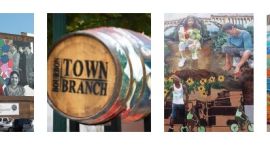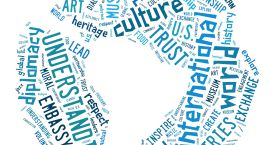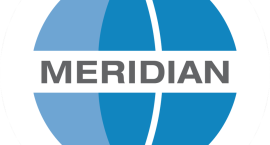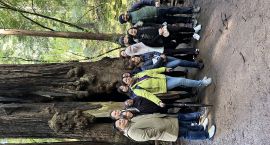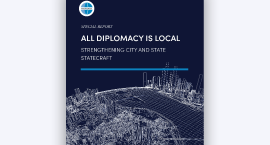This post documents my mural arts exchange in Managua, Nicaragua, through the Bureau of Educational and Cultural Affairs’ Community Engagement through the Arts program. The first two covered the community murals I created with local youth in El Viejo and León, respectively.
Managua was the third city in the series of mural exchanges during this month-long tour of the country. We had a big turnout for the workshop at the blue school in the neighborhood of Santa Ana. When we arrived, the wall hadn’t been quite agreed upon, but this was just a minor setback. With help in the right direction, we received word that it was possible to work on the walls as planned. Every moment was filled with change.
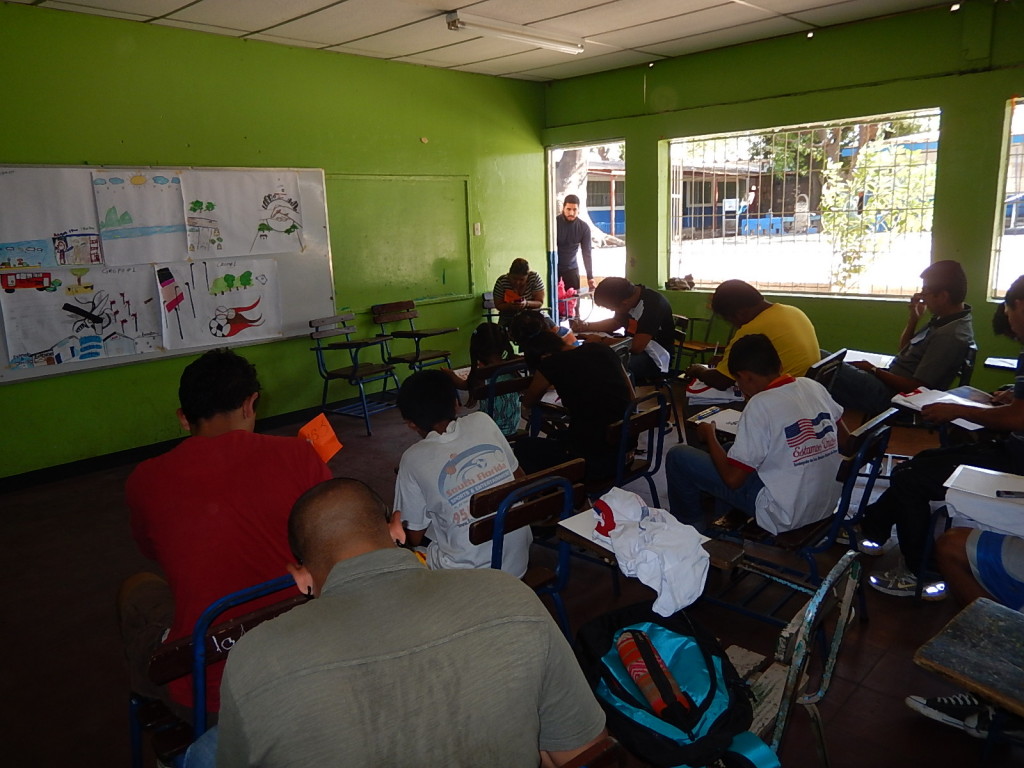


At the empty blue school, with monstrous fairytale trees growing outside the building, we broke into three groups to make drawings and to exchange ideas about things that might be addressed in our mural and in our dialogue. With this much more varied group, ideas ranged from broken street lamps, education, and polluted lakes to the Bible, beautiful birds, dancing hands, sports, and traffic circles. It is always interesting to see what makes people tick. These workshops are like therapy sessions for the whole neighborhood. As with the earlier workshops in El Viejo and León, some of the more artistic kids with big ideas took the lead in the group and actually drew out their thoughts for the others. I really enjoy watching this happen.
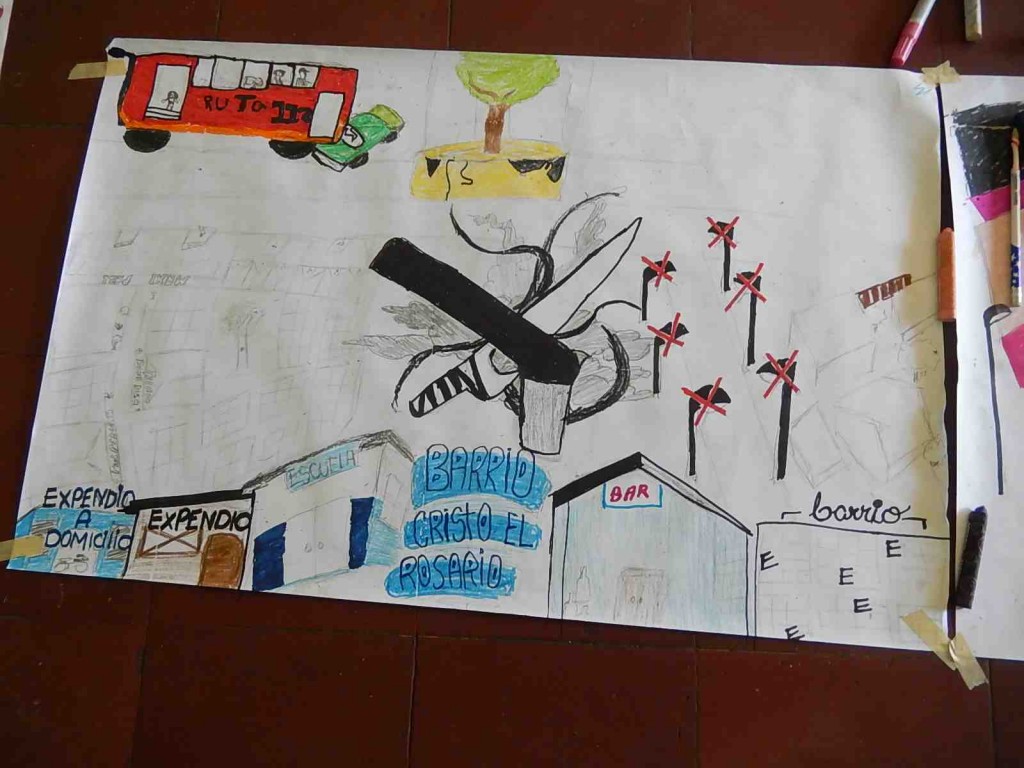
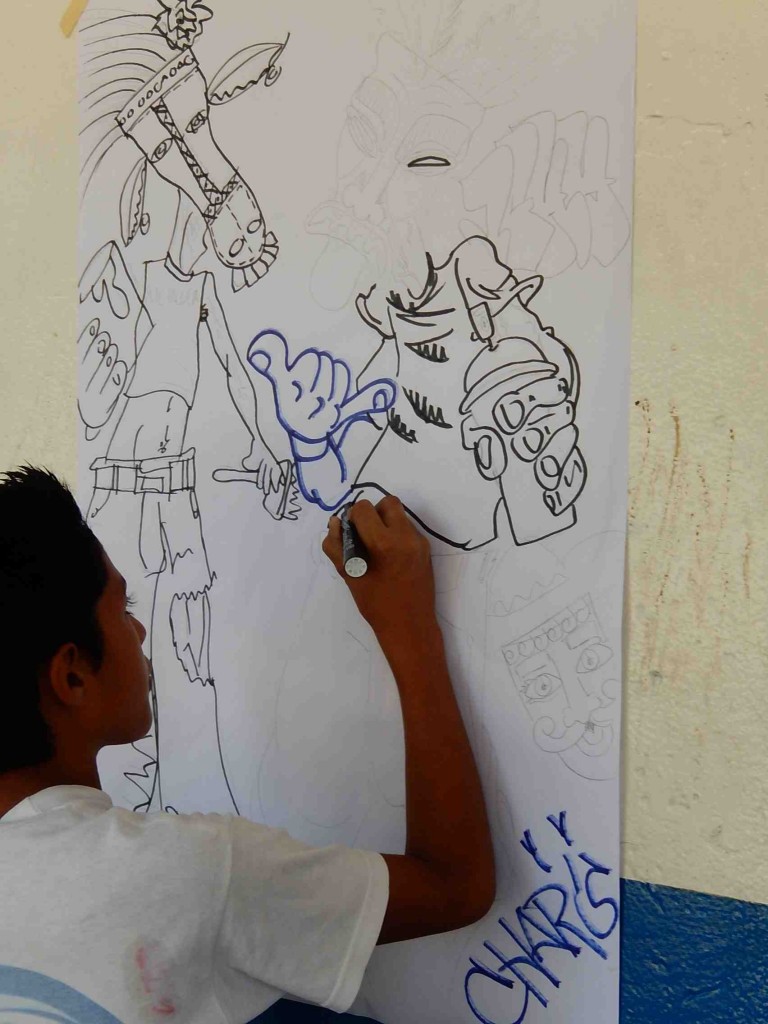
At the end of the day we walked two blocks to the mural site and set down some colored primer, working until the sun was gone. Pale yellow and pale blue – with primer we could map out where we would paint, the first step in creating the artwork.
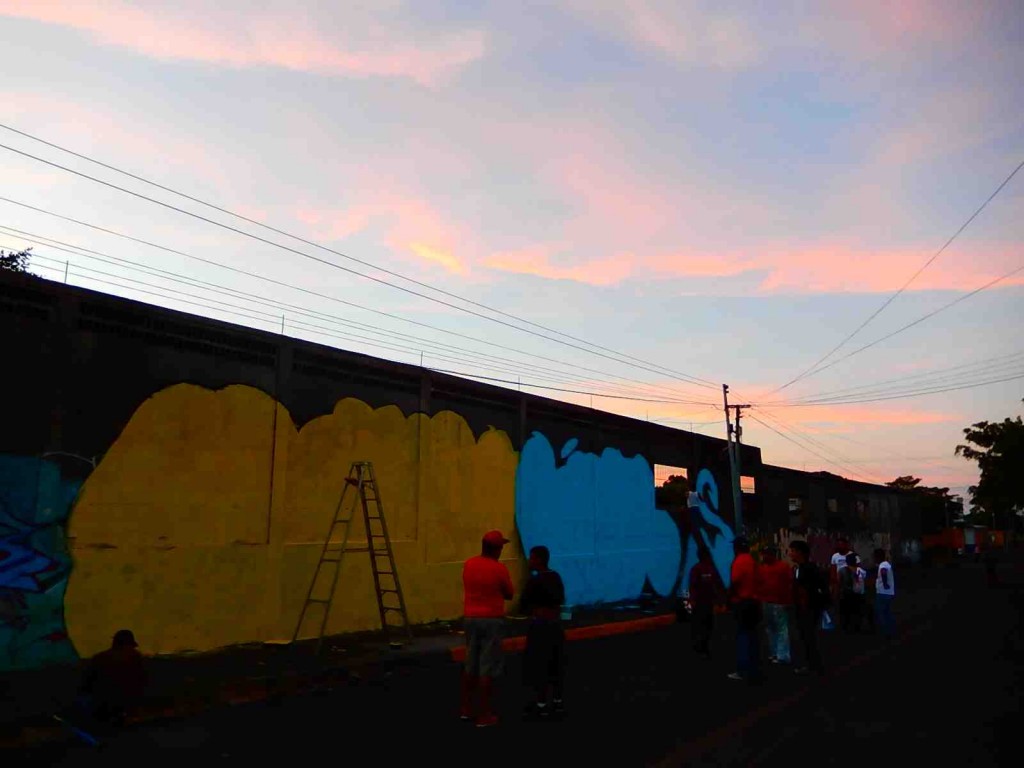
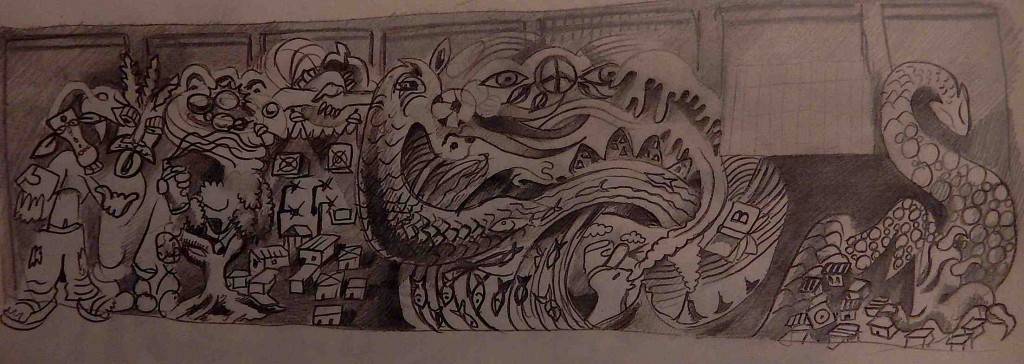
I designed the wall sketches from my hotel bar in pencil, over a few Toña Cervezas. The drawings were small but detailed and included many of the ideas that came up during the day, including some mammoth figures from Nicaraguan folkloric culture, which became giant, masked, skinny hip-hop figures with baggy, torn pants wielding spray cans. After informally sharing photocopies with the group, the participants gravitated towards version # 1 (always the one with more contrast), but we ended up with a mix of the two sketches and some extra additions.
On the day of actual painting, hordes of little children from Santa Ana came to paint. I don’t turn anyone away from these activities, so we found some way for all of them to contribute. There were smiles all around. Because I anticipated this, I had designed the walls to have a lot of simple shapes at the bottom for easy participation. The little tiny hands had a lot to do, and their accompanying adults’ larger hands and minds were thus occupied as well. That day was a frenzy – they were so excited to get on the wall, one and all. Before I was able to draw anything, everyone involved came forward to help.
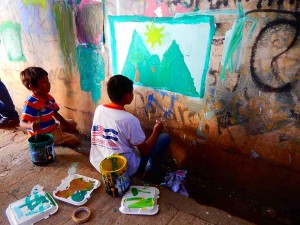
The drawing was thus interpreted: it passed through me, then would pass through the spray cans and crayons, thus transforming the mural two, three times through the funnel of hands, lines, and minds, a very circular transformation.
Because the wall was three meters high, we needed several ladders and scaffolding. The higher parts were done by talented kids who balanced on precarious ladders and executed crafty paintwork to bring viewers’ eyes skyward. Some of these kids were in art school or just had some good control and artistic knowledge, making the painting a very collaborative process. The design developed on the spot over the course of the three days we spent on it.
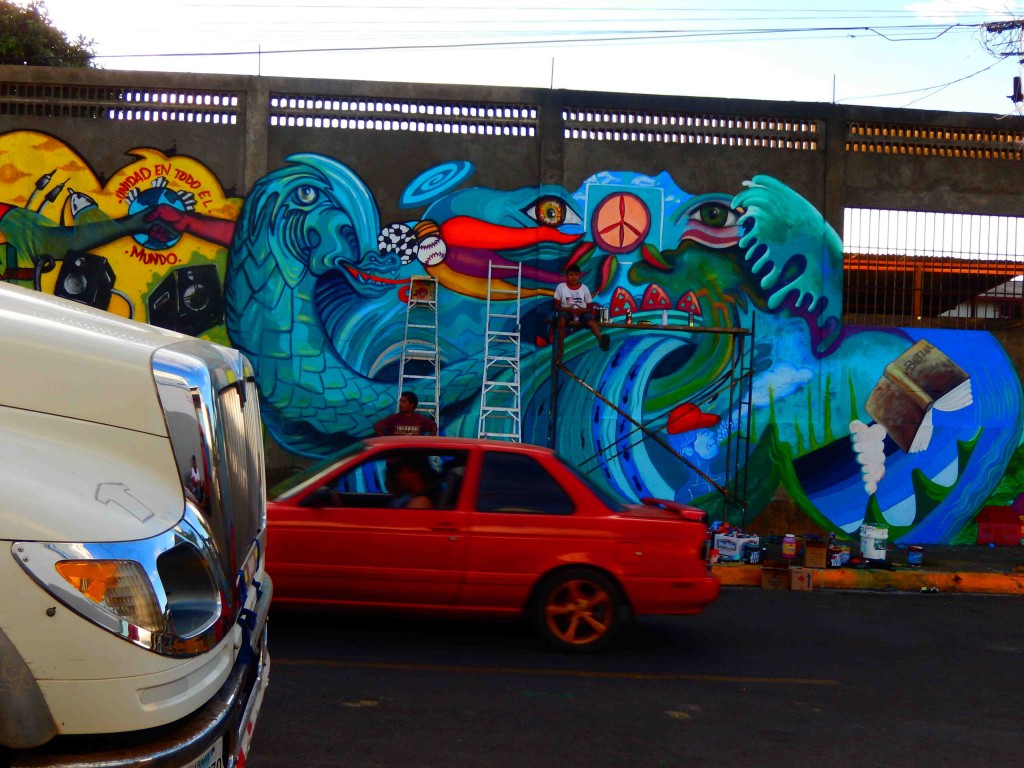
Participants included a Fulbright scholar studying mural making who was sent by the embassy. I think my method was a divergence from his usual research – most of the time the process in this exchange seems to be total chaos under a thin veil of control. One older señora from the community had a huge clan of grandchildren that swarmed about her and me, tugging on my shirt and continually asking, “What’s next?”
We had an expansive first day, getting the essential color scheme on the wall. The next day was filled with more sun and was a bit calmer. All the artists were glad that there was something on the wall, but we had a ways to go and continued to persist for two more days until we were satisfied with the finished piece.

In the end, I think it was a great success. Imagery reflected the nearby lake, a heavily polluted body of water that we represented with a great turquoise dragon. Blue waves from the original sketch were repeated and redrawn on both sides, expanding to frame the wall. The neighborhood, with its purple lilac casitas, was also represented by cultural icons, musical fiestas, and working streetlights under giant jungle trees. Personal icons the participants had drawn during the workshop emerged – one gentleman who had identified with the Bible as his “symbol” had drawn it facing downward, with its spine upward. I found it a curious depiction and included it in the final mural, flying over the waves.
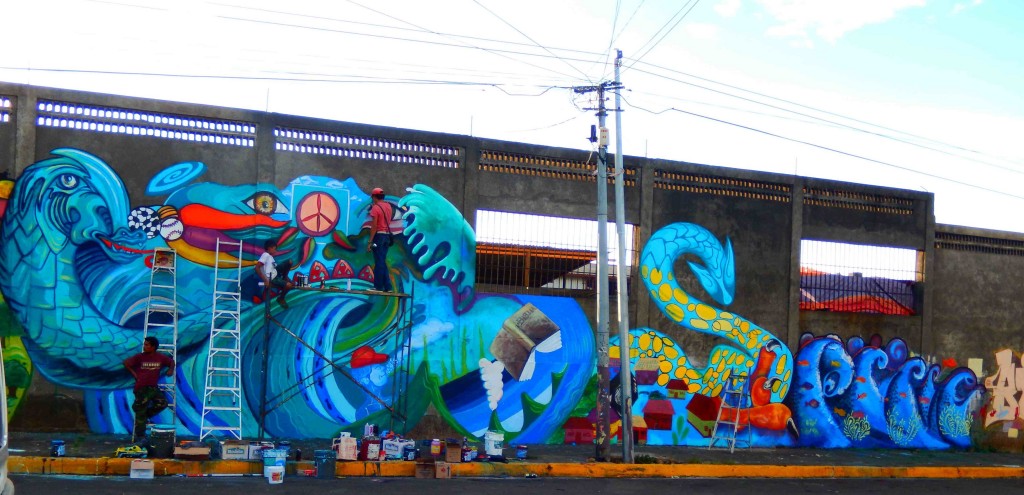
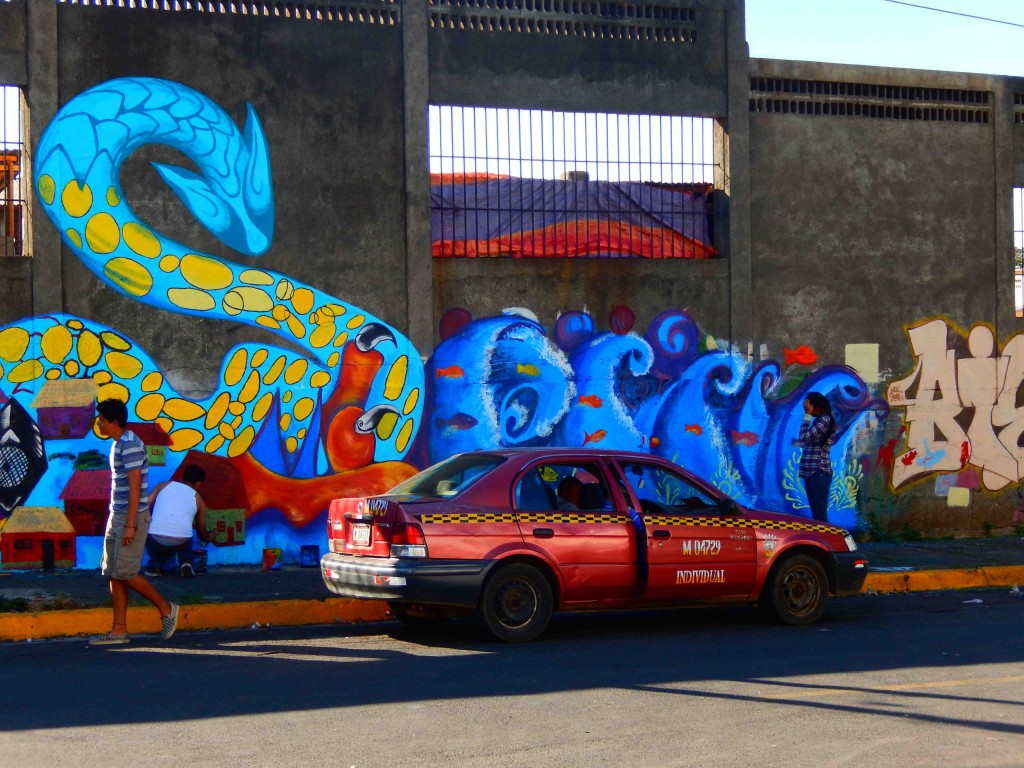
The same man spoke tender words about the mural process during the dedication and unveiling reception. I was moved, as he was very appreciative and articulate about my inclusive process, describing to the crowd how I let people in on the project and how he was so taken by my inclusion of everyone’s ideas.
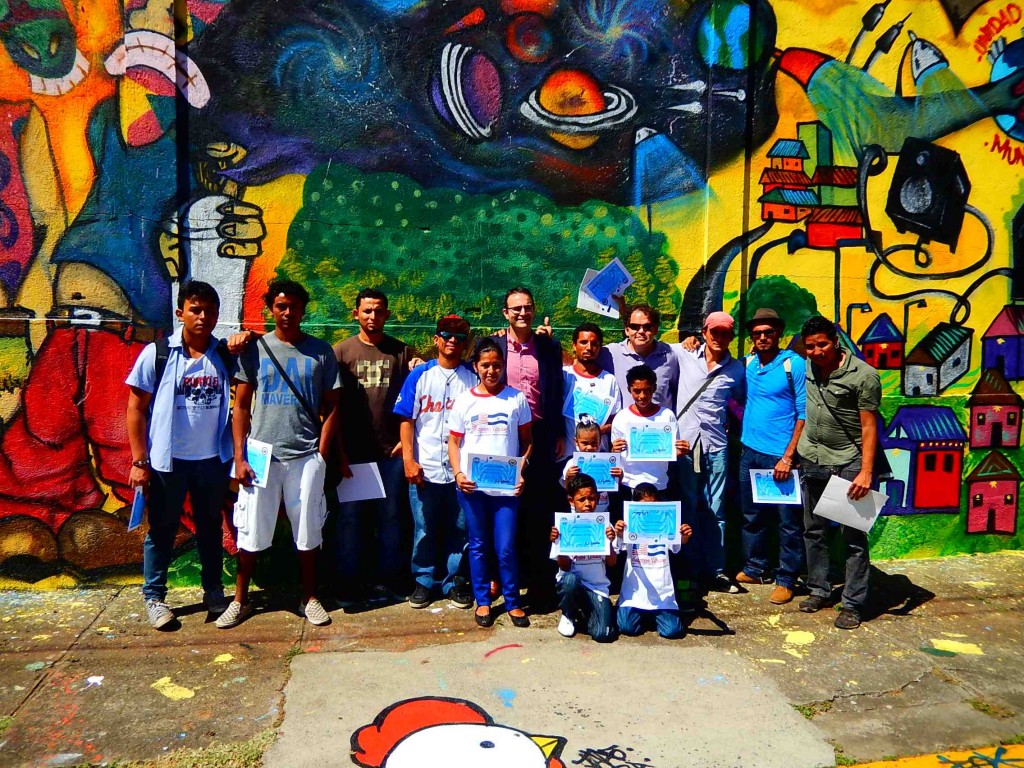
I felt like I had truly reached someone, because he in turn took it upon himself to explain the mural and how this artwork came to be. I spoke a few words of thanks to the group and expressed my gratitude for allowing me to be a part of their world for that week. It is times like this that I feel a little validated and, I admit, get a little choked up.
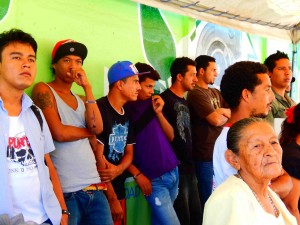
At the celebration they brought on the giant puppets, a cross-dressing dancer, and a goofy clown who banged a drum and made loud exclamations with each pounding. As I distributed the blue diplomas proving participation in the mural exchange, the stacks of pizzas were devoured by all under the sun-protective tent.
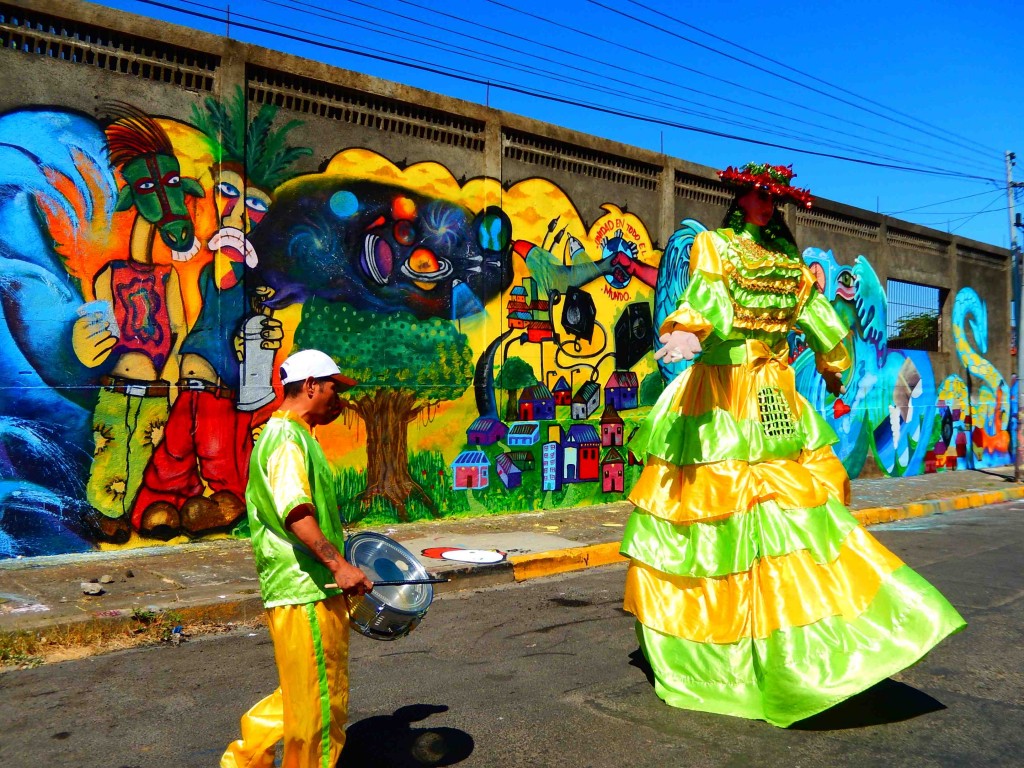
As in a dream, though, I was promptly whisked off in the platinum-colored embassy SUV. I couldn’t help seeing it as abrupt, but I had more business to attend to that day. I visited another site, the Centro Nicaragüense NorteAmericano, a newly built facility that has a theatre, dance and art spaces, and classrooms for teaching English and other subjects. Chris, the director, a Canadian from Saskatchewan, invited me to create a mural at the center. The space was beautifully designed, and reminded me a bit of the Banff Arts Center where I had my first artist residency so many years ago during graduate school.

I chose a prominent spot over the theatre entrance for the piece that I would work on during some of my last days in Nicaragua. I decided to give them one of my feathers as a symbol of collaboration – a giant 1×3-meter ink feather prepared out of simple lines, curving and ending on a spine. I drew the outline the first day, and painted it the next before leaving for more projects on the other side of the country, on the Mesquite coast.

We took a tiny twelve-seat airplane to Bluefields, a part of the country that had been colonized by the English and has a large autonomous zone where many different indigenous groups reside (perhaps comparable to American Indian reservations in the United States). Some spoke their own languages, but a distinct Creole filled the sound waves, in addition to a softer, more Atlantic Spanish. This part of the country is different – very Caribbean, and the Atlantic Coastal people have a pride that set them apart from the rest of Nicaragua; it was clearly to be a very different experience.
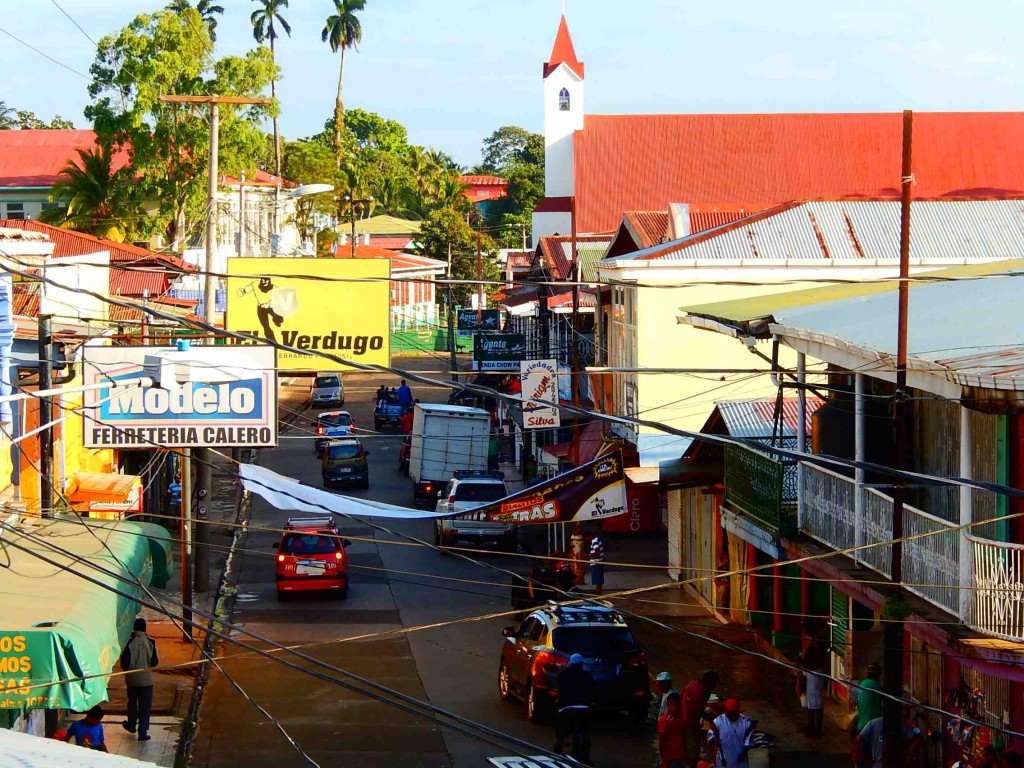
Once I transcribe my scribbled notes to help me remember the days now far off in the sea but close to memory, I will tell you all about Bluefields in my next and last entry, along with my departure for the freezing northeast United States.









